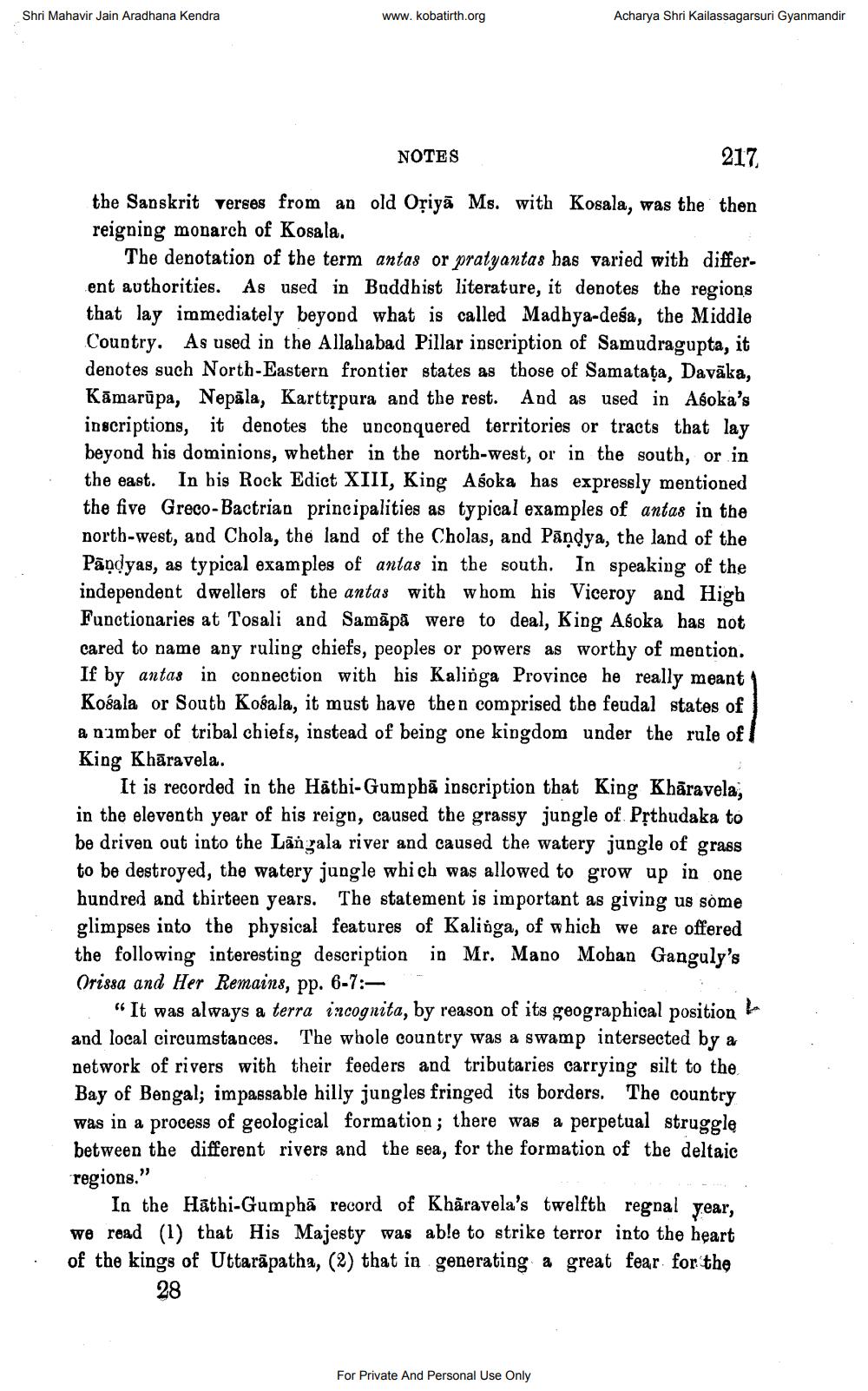________________
Shri Mahavir Jain Aradhana Kendra
www.kobatirth.org
Acharya Shri Kailassagarsuri Gyanmandir
NOTES
217 the Sanskrit verses from an old Oriyā Ms. with Kosala, was the then reigning monarch of Kosala.
The denotation of the term antas or pratyantas has varied with different authorities. As used in Buddhist literature, it denotes the regions that lay immediately beyond what is called Madhya-deśa, the Middle Country. As used in the Allahabad Pillar inscription of Samudragupta, it denotes such North-Eastern frontier states as those of Samatata, Davāka, Kāmarūpa, Nepāla, Karttạpura and the rest. And as used in Asoka's inscriptions, it denotes the unconquered territories or tracts that lay beyond his dominions, whether in the north-west, or in the south, or in the east. In his Rock Edict XIII, King Asoka has expressly mentioned the five Greco-Bactrian principalities as typical examples of antas in the north-west, and Chola, the land of the Cholas, and Pandya, the land of the Pāņdyas, as typical examples of antas in the south. In speaking of the independent dwellers of the antas with whom his Viceroy and High Functionaries at Tosali and Samāpā were to deal, King Asoka has not cared to name any ruling chiefs, peoples or powers as worthy of mention. If by antas in connection with his Kalinga Province he really meant Košala or South Košala, it must have then comprised the feudal states of a number of tribal chiefs, instead of being one kingdom under the rule of King Khāravela.
It is recorded in the Hathi-Gumpbā inscription that King Khāravela, in the eleventh year of his reign, caused the grassy jungle of Přthudaka to be driven out into the Länyala river and caused the watery jungle of grass to be destroyed, the watery jungle which was allowed to grow up in one hundred and thirteen years. The statement is important as giving us some glimpses into the physical features of Kalinga, of which we are offered the following interesting description in Mr. Mano Moban Ganguly's Orissa and Her Remains, pp. 6-7:
"It was always a terra incognita, by reason of its geographical position L and local circumstances. The whole country was a swamp intersected by a network of rivers with their feeders and tributaries carrying silt to the Bay of Bengal; impassable hilly jungles fringed its borders. The country was in a process of geological formation; there was a perpetual struggle between the different rivers and the sea, for the formation of the deltaic regions."
In the Hathi-Gumphā record of Khāravela's twelfth regnal year, we read (1) that His Majesty was able to strike terror into the heart of the kings of Uttarāpatha, (2) that in generating a great fear for the
28
For Private And Personal Use Only




